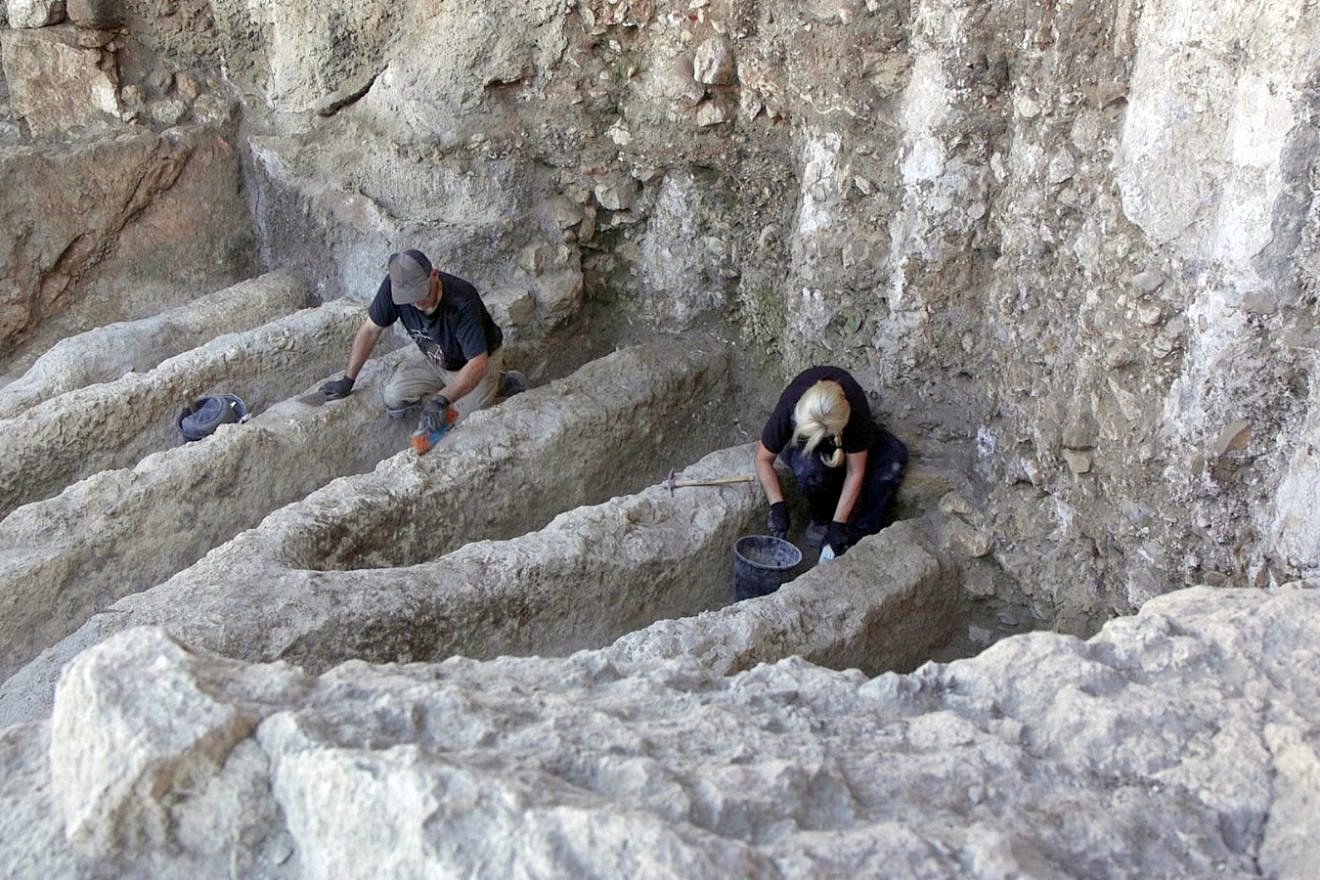An unprecedented channel installation dating back to the First Temple period was uncovered in the City of David National Park in Jerusalem, the Israel Antiquities Authority announced on Wednesday.
The excavation thus far has uncovered two installations about 10 meters apart, which may have composed one large installation. The first installation includes a series of at least nine channels that were smoothed. On top of the rock cliff that encloses the installation to the south can be found seven drain pipes, which carried liquid from the top of the cliff.
Such structures have not been found anywhere else in Israel and their purpose remains elusive.
“We even recruited the help of the police forensic unit and its research colleagues around the world, but so far—to no avail,” said Yiftah Shalev, a senior researcher at the Antiquities Authority.
One theory posits that these channels were used for soaking products, possibly agricultural produce such as flax or dates.
“The production of linen, for example, requires soaking the flax for a long time to soften it. Another possibility is that the channels held dates that were left out to be heated by the sun to produce silan [date honey],” Shalev explained.
The latter would be in line with similar structures found in Oman, Bahrain and Iran, though never before found in Israel, he said.
“We looked at the installation and realized that we had stumbled on something unique, but since we had never seen a structure like this in Israel, we didn’t know how to interpret it. Even its date was unclear,” Shalev said.
According to Professor Yuval Gadot of Tel Aviv University, which is also involved in the excavations, “This is an era when we know that Jerusalem covered an area that included the City of David and the Temple Mount, which served as the heart of Jerusalem. The central location of the channels near the city’s most prominent areas indicates that the product made using them was connected to the economy of the Temple or Palace.”
He explained that the Temple’s ritual activity “includes bringing agricultural animal and plant produce to the Temple; many times, Temple visitors would bring back products that carried the sanctity of the place.”
Although it isn’t clear when the installation was dug, Gadot said that the researchers were able to date when the facility fell out of use.
“The end of the ninth century BCE, during the days of the biblical kings of Judah—Joash and Amaziah,” he explained. “We assume that the two installations, which, as mentioned, may have been used in unison, were constructed several decades earlier.
The City of David National Park is where King David established his capital and where many pivotal biblical events took place. Visitors can see the excavated remains of houses, cisterns and fortifications, getting a glimpse into Jerusalem’s ancient history. The park is best known for Hezekiah’s Tunnel, which King Hezekiah had built to provide water to the city ahead of an Assyrian siege led by Sennacherib.
The Antiquities Authority said the channels would be open to the public next week.


























